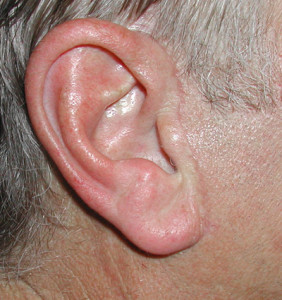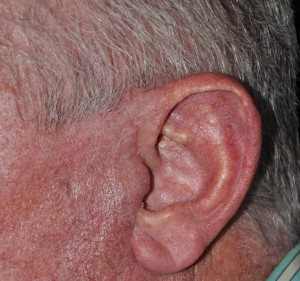Facelift surgery is the most effective method for reshaping the aging neck and jawline. While many variations of facelifts exist, each with their own advocates, it is clear that there is no single one best way to perform the surgery. The extent of skin undermining, how the underlying SMAS layer is manipulated and what other procedures are done with the facelift, (e.g., fat injections, cheek and chin implants) dominate the talk about facelift surgery. And while each of these maneuvers has their own merits, the most important outcome of a facelift is whether it is detectable as having been done.
The most distinguishing markers of having had a facelift are the incisions around the ear and whether the hairline around them looks undisturbed. Thus the placement of the ear incisions and how the hairline is managed determines whether the facelift is detectable or not. Visible incision placement, wide scars, distorted earlobes and stepoffs in the temporal or occipital hairlines are assured indicators of surgical manipulation and detectability.
While much of a facelift procedure is the same regardless of gender, the one clear difference is in how the incisions are managed. Beard skin and shorter hairstyles are what makes facelift incisions between men and women potentially different. While the retrotragal preauricular incision (behind the tragus in the front of the ear) is the standard for women, beard skin in men requires more thought for the location of this preauricular incision.


Besides the aesthetics of the incisional healing around the ears, the placement of male facelift incisions also influences the neck and jawline changes as well. Less dramatic changes in the neck often result in male facelifts because of the care taken to have good incisional healing and displacement of the beard skin onto the ear.
Dr. Barry Eppley
Indianapolis, Indiana


